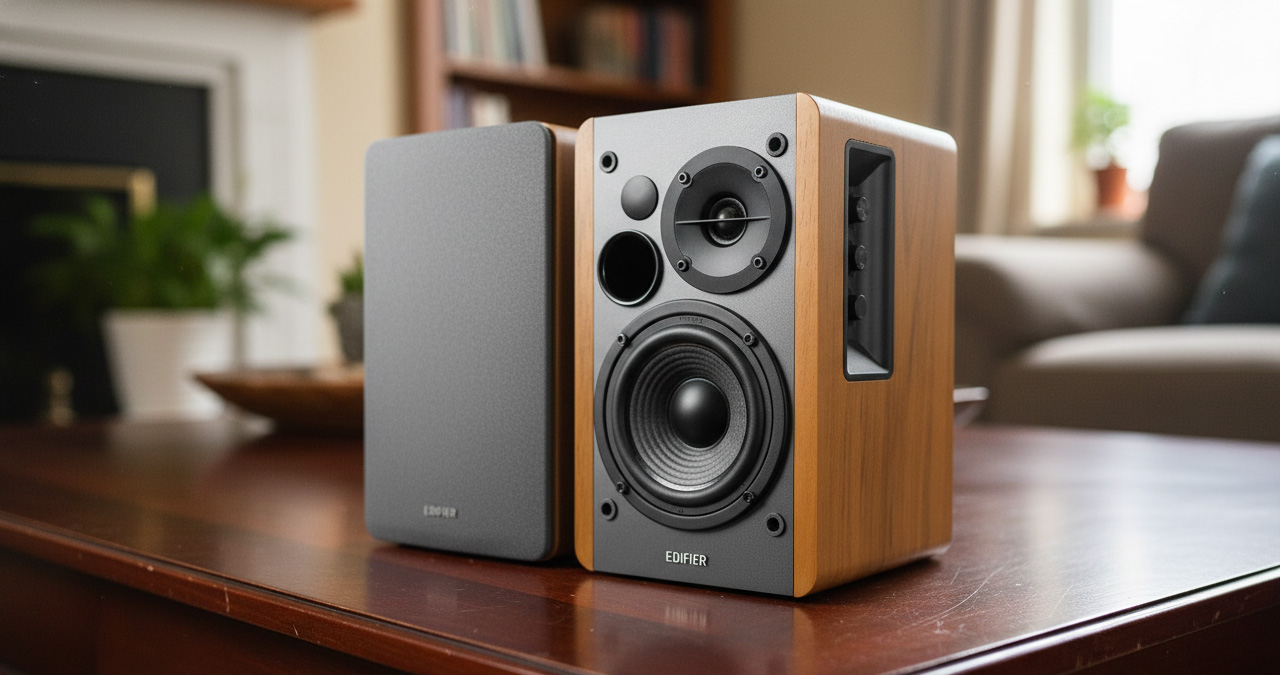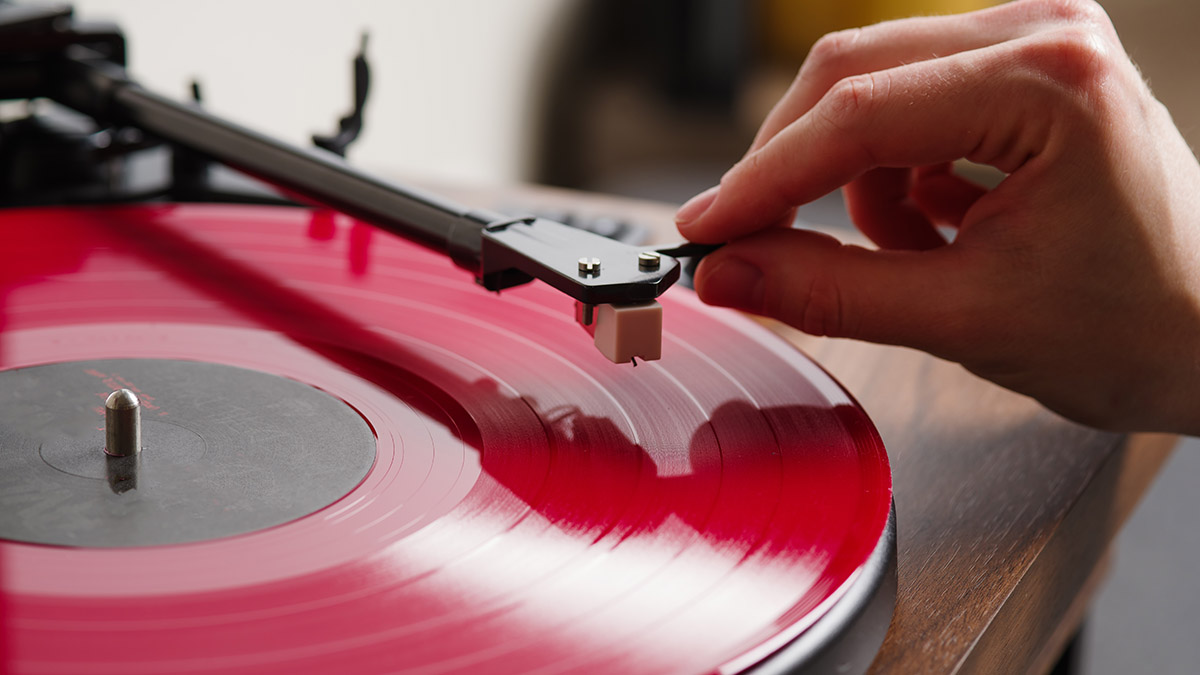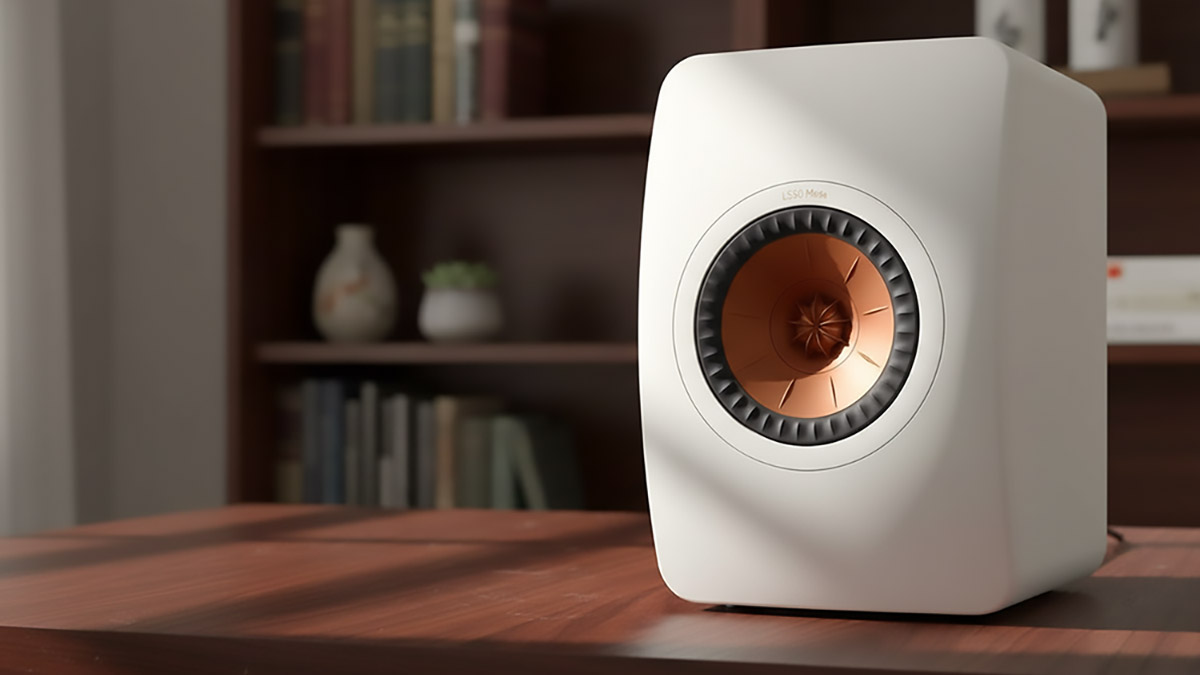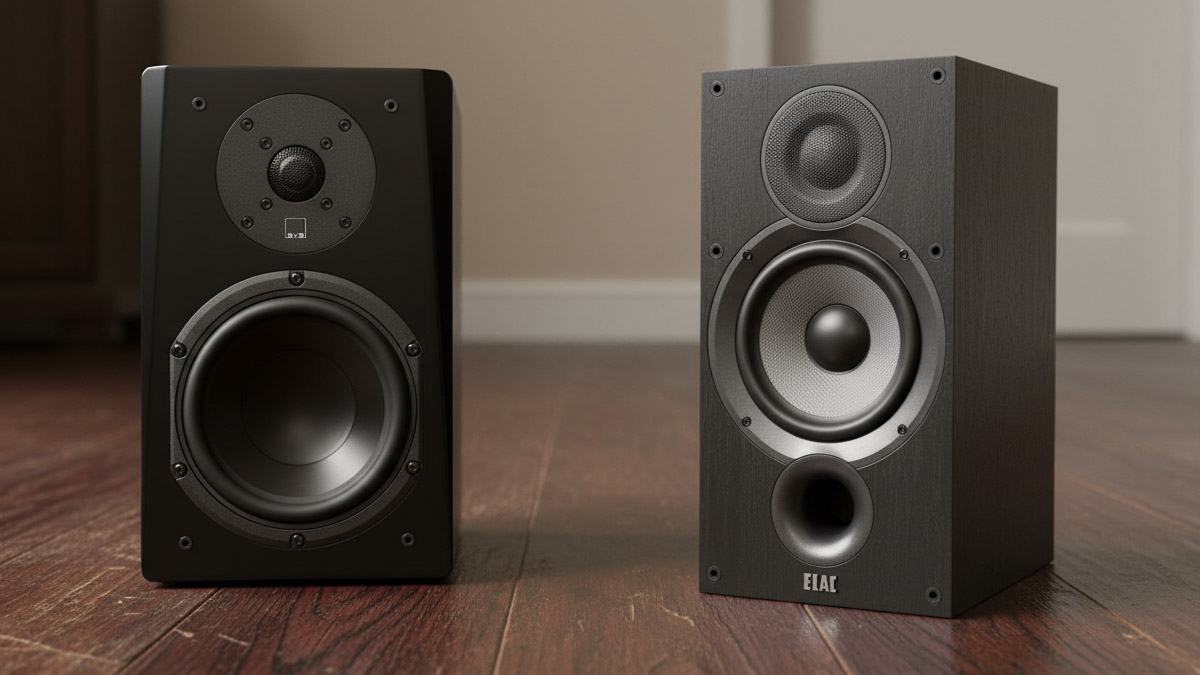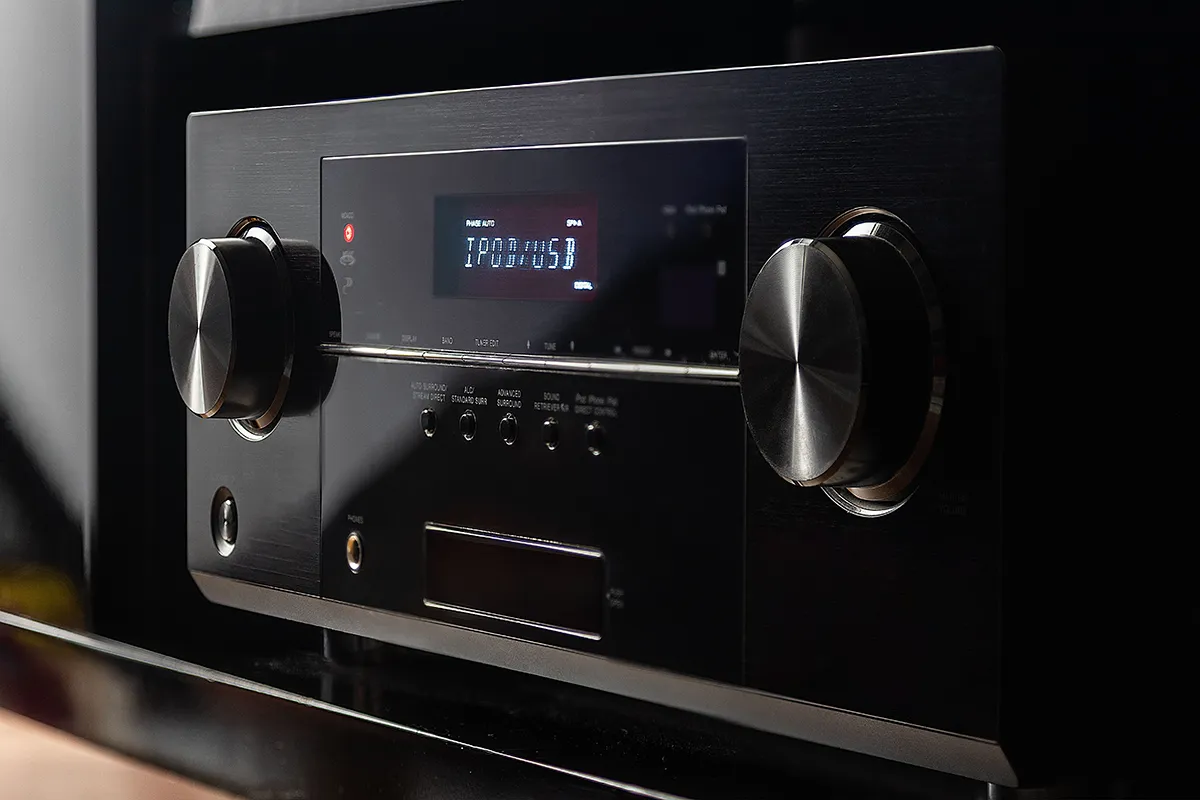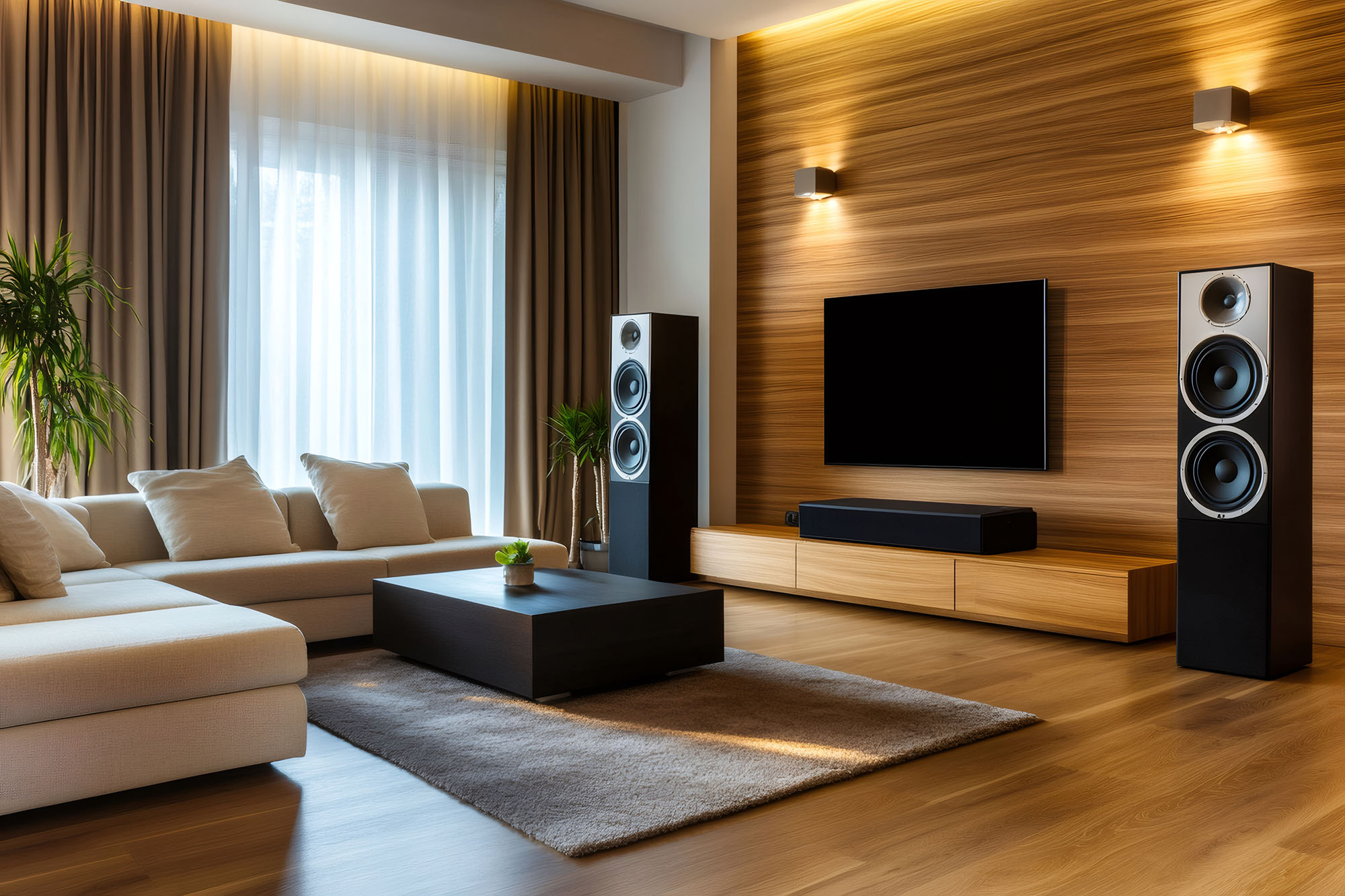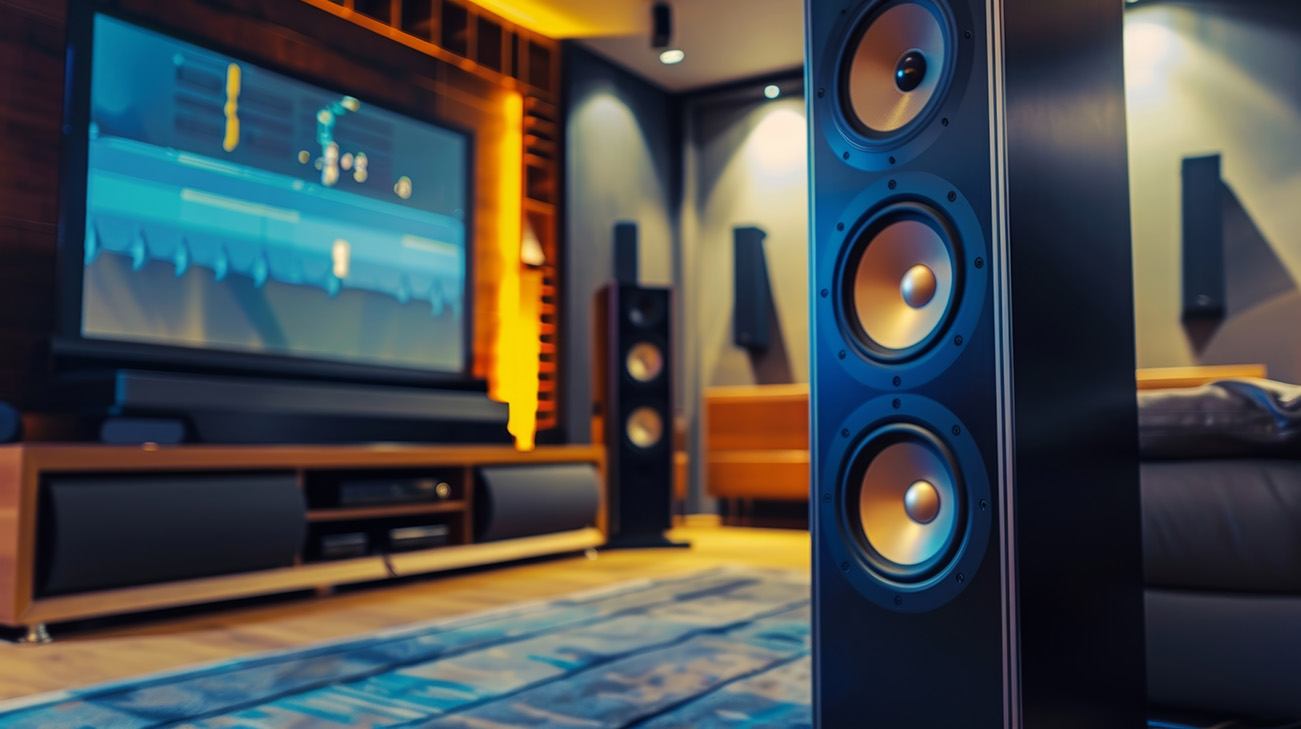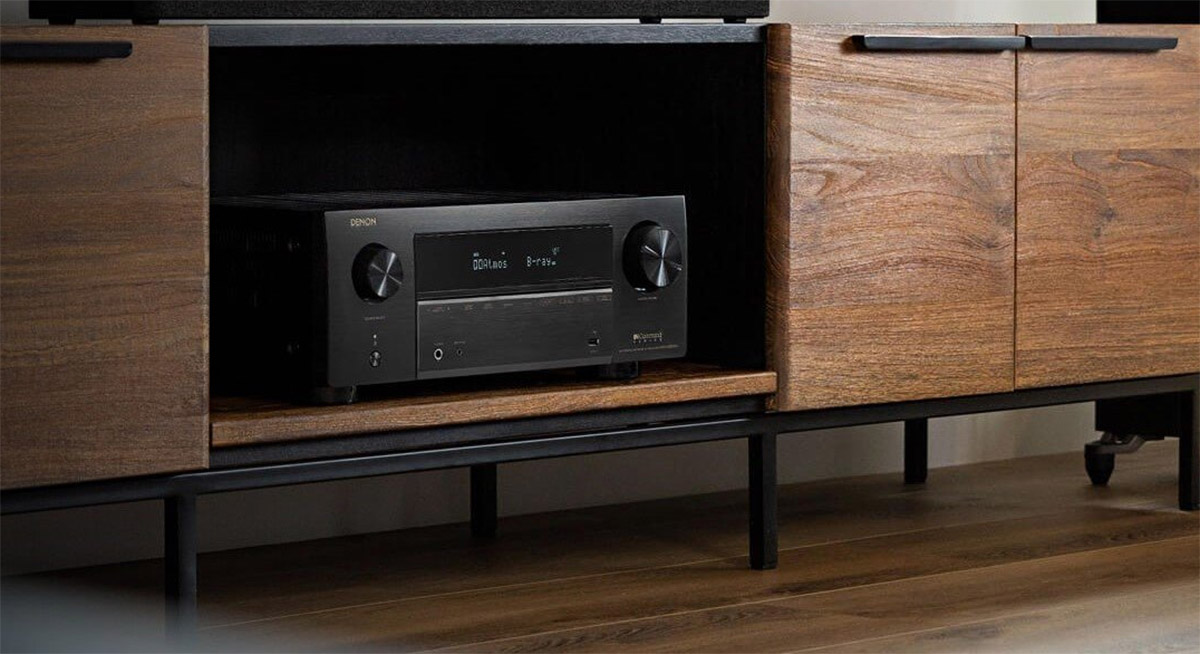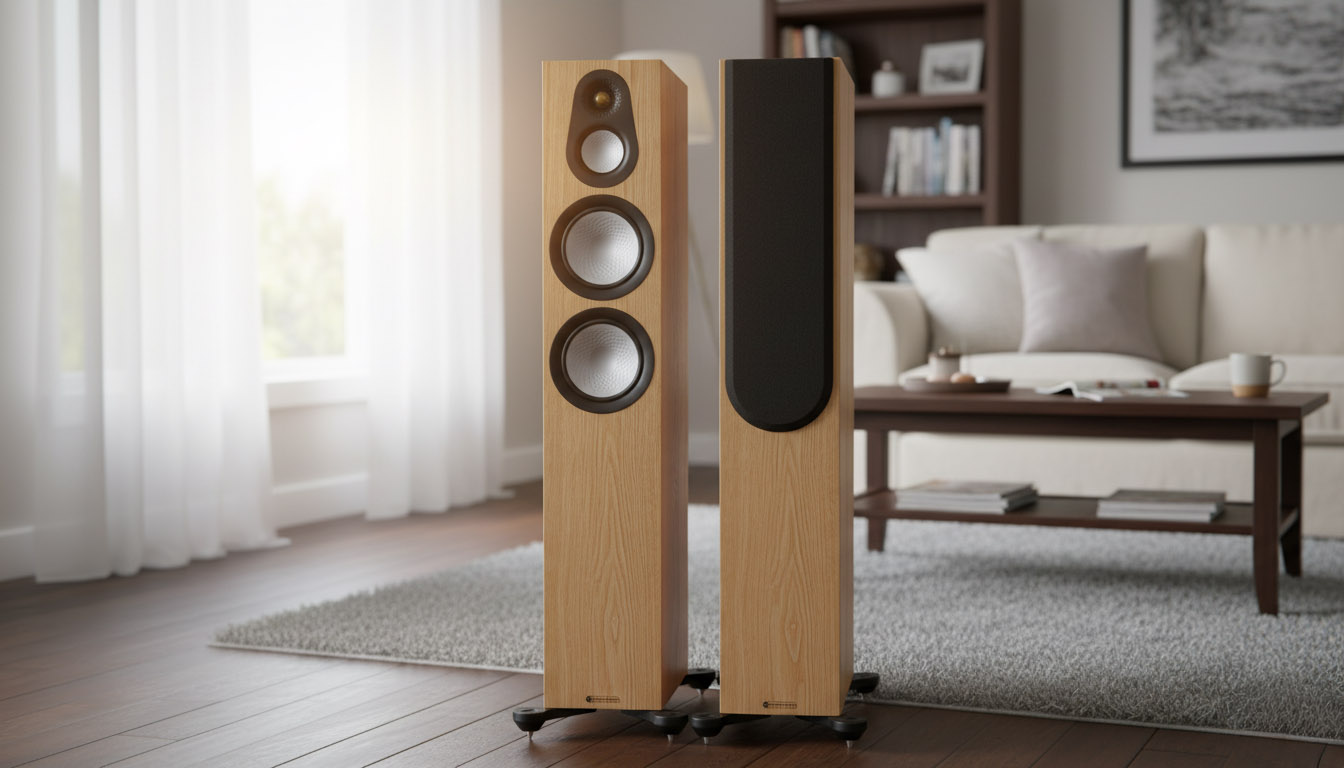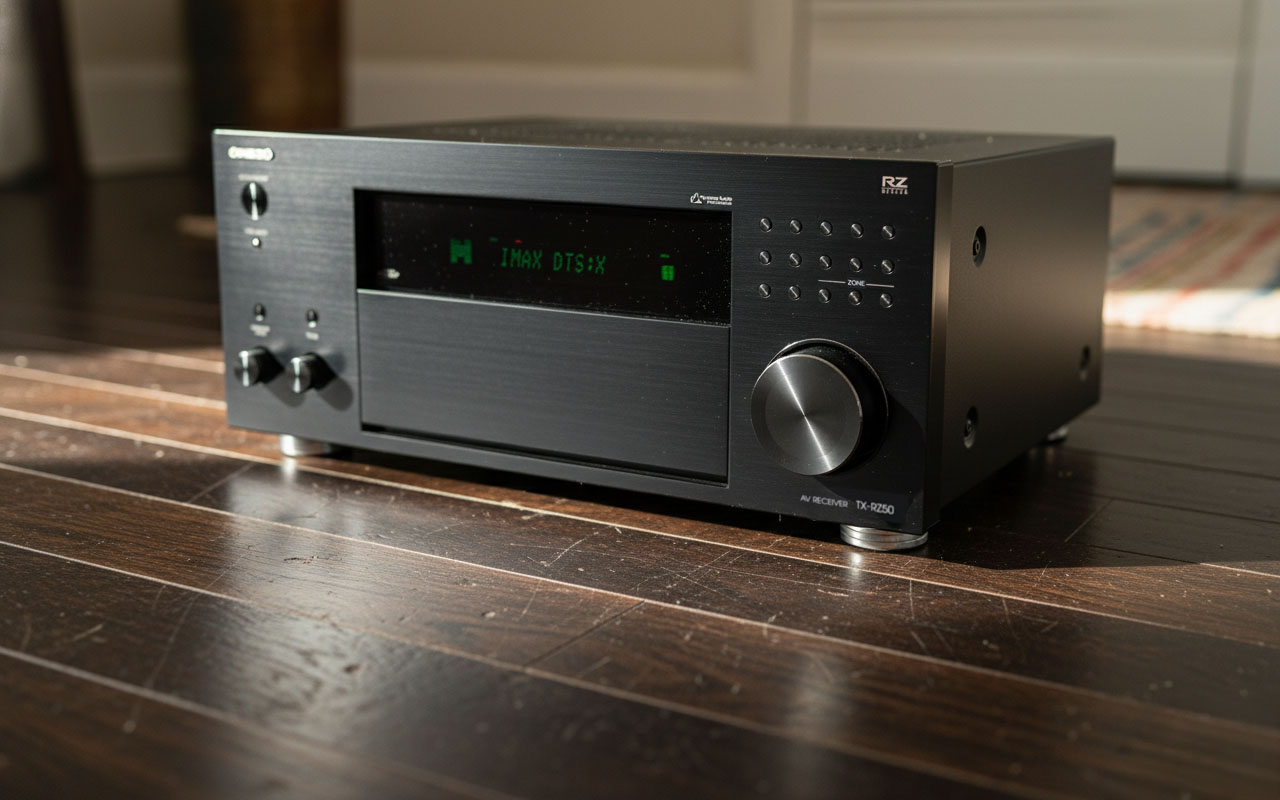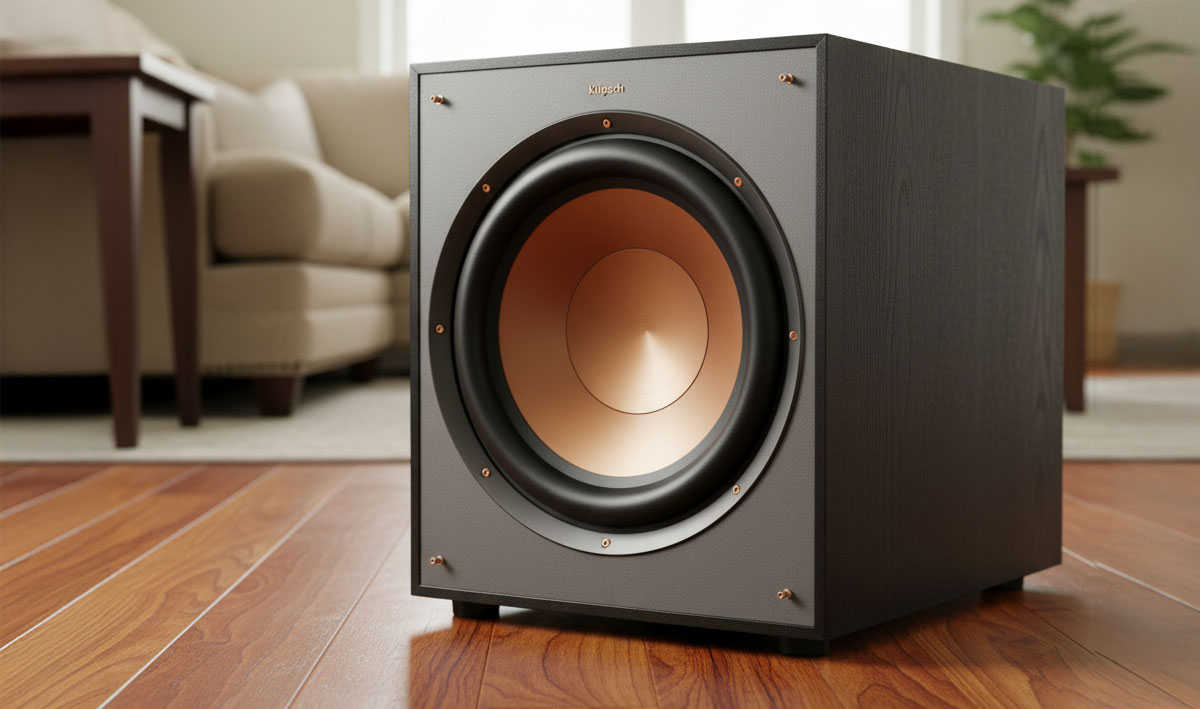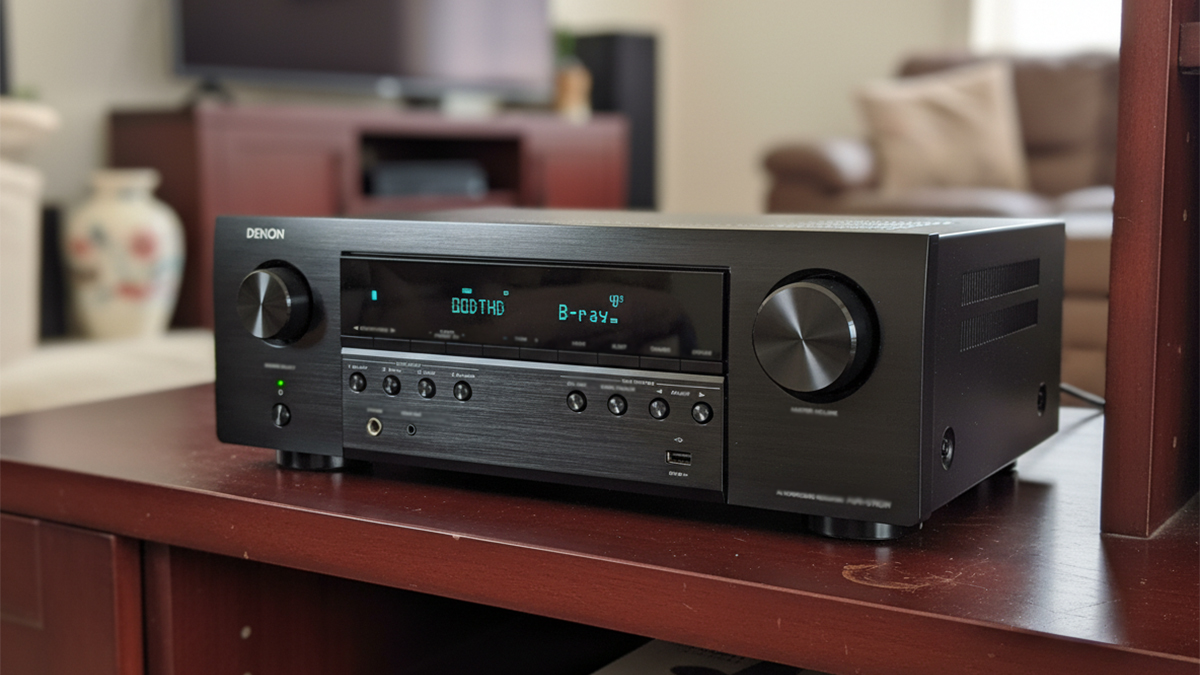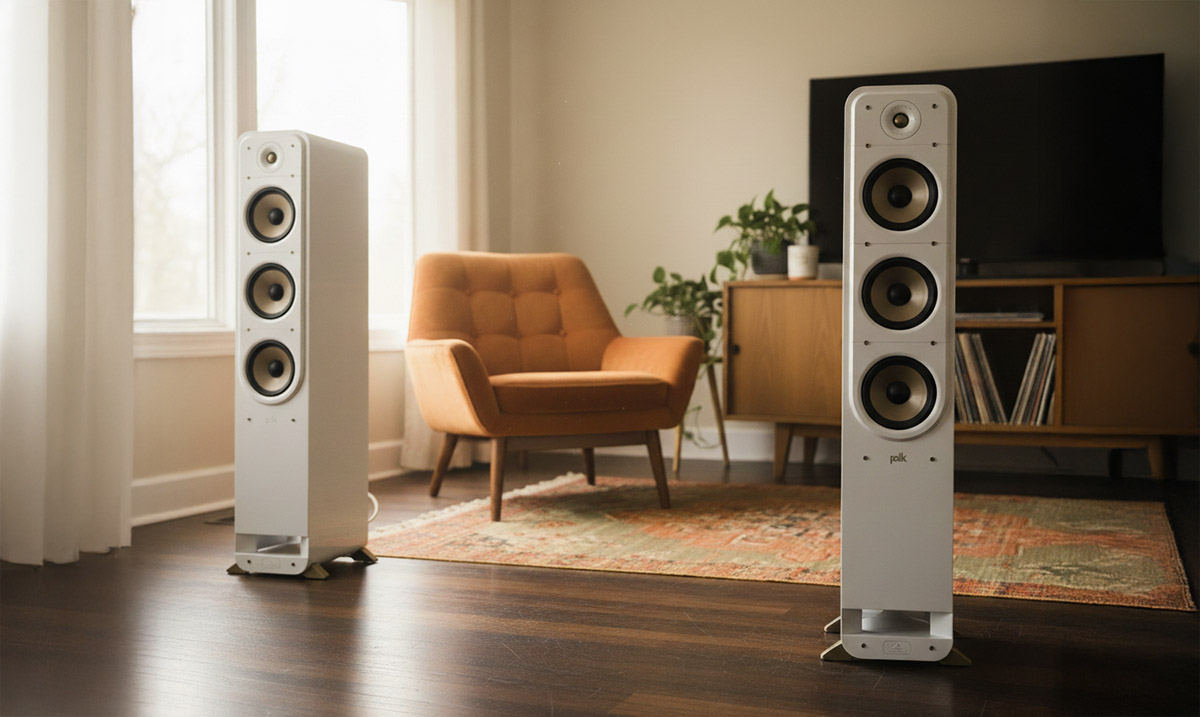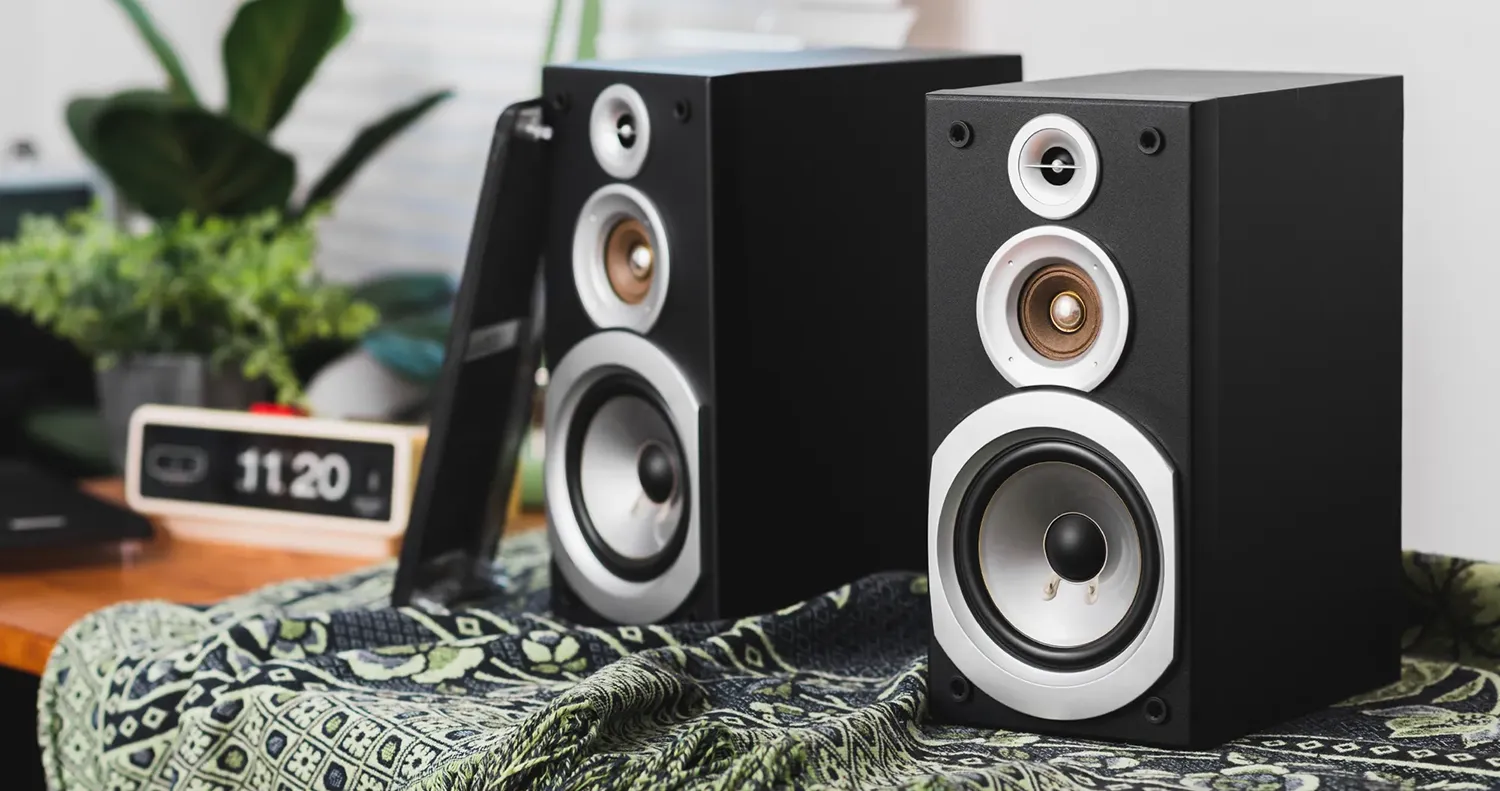Quick Take
The Edifier R1280T is a compact powered bookshelf pair that performs above and beyond its size and price range. Owners praise its lively clarity, simple plug-and-play setup, and surprising volume from a modest footprint. Bass is tight rather than thunderous, so movie fans often add a sub for the lowest notes, but for desks, bedrooms, and living rooms the R1280T sounds full and engaging. Controls on the side panel make day-to-day use easy, and the dual RCA inputs let you keep two sources connected at once. A few listeners hear the treble as a little forward in bright rooms and wish for Bluetooth, yet most agree these speakers deliver an enjoyable, hassle-free upgrade that feels far more expensive than it is.
Pros:
![]() Strong output for the size
Strong output for the size![]() Clear dialogue and crisp detail
Clear dialogue and crisp detail![]() Dual RCA inputs that stay connected at the same time
Dual RCA inputs that stay connected at the same time![]() Handy bass and treble knobs plus volume and remote
Handy bass and treble knobs plus volume and remote![]() Classic wood-grain look that blends into most rooms.
Classic wood-grain look that blends into most rooms.
Cons:
![]() No built-in Bluetooth
No built-in Bluetooth![]() Bass depth is limited without a sub
Bass depth is limited without a sub![]() Rear port needs some breathing room
Rear port needs some breathing room![]() Treble can sound a touch bright in bare rooms.
Treble can sound a touch bright in bare rooms.
Introduction
Powered bookshelf speakers promise a simple recipe: power, inputs, and drivers in one compact cabinet that works almost anywhere. The Edifier R1280T embraces that idea and aims it squarely at people who want real stereo sound without a receiver or a maze of cables. Each speaker is petite enough for a bookshelf or desk, yet the pair moves plenty of air thanks to an efficient amplifier section and a tuned rear port. What makes the R1280T compelling is how little effort it asks from the listener. You can connect a turntable with a phono preamp, a computer, a TV’s analog output, or a small streamer, then set volume and tone on the fly. For many homes, that checks the boxes: clear sound, clean look, and predictable behavior.
Key Features
At the core of the R1280T are 4-inch mid-bass drivers and 0.5-inch silk-diaphragm tweeters working with a two-way active crossover. The built-in amplifier delivers 21 watts per channel (42 watts total), which is plenty in a near-field setup and surprisingly capable from across a small to medium room. The cabinet uses a rear bass-reflex port to extend low-end reach, and the system’s rated frequency response is 52 Hz to 20 kHz. In plain terms, it plays cleaner and lower than most computer speakers and carries real stereo weight for its size.
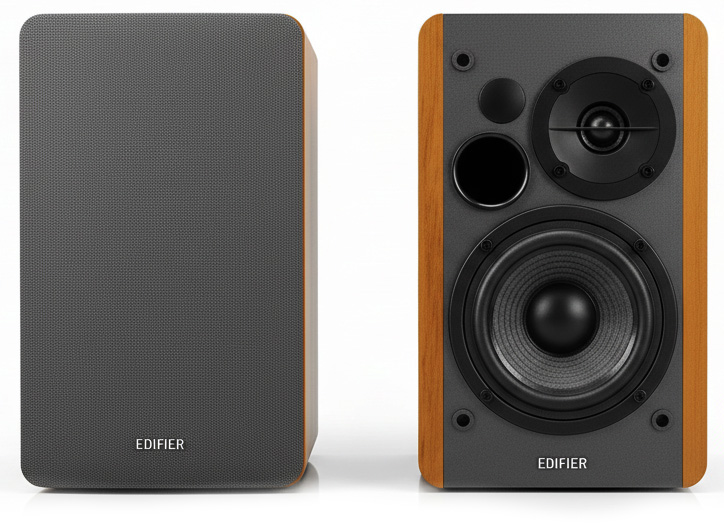
Connections are intentionally simple. Around back you get two stereo RCA inputs labeled Line 1 and Line 2, so a PC and a turntable (with preamp) can live side by side. Both inputs remain active; you do not need to replug anything—just pause or lower the volume on the source you are not using and set the level with the speaker’s volume control or the included remote. That side panel also houses separate bass and treble knobs, each offering useful adjustment. These tone controls let you gently trim a bright room or add a little warmth at low listening levels without diving into software EQ.
The system layout keeps things practical. The right “master” cabinet contains the amplification and control board, while the left cabinet connects via the included speaker cable. Removable cloth grilles keep the look understated. The wood-grain vinyl wrap and matte front baffle give the pair a classic vibe that reads as decor rather than tech. Each cabinet measures about 9.2 inches tall, 5.7 inches wide, and 7.7 inches deep, and the pair weighs roughly 10.8 pounds, so placement on real furniture is easy.
Sound Quality and Setup
User feedback forms a clear picture. The R1280T’s calling card is intelligibility. Voices sit forward and stay easy to follow, which makes podcasts, YouTube, and dialogue-heavy shows feel effortless. Acoustic guitars, snares, and cymbals carry snap, while pianos and strings keep their shimmer without smearing together. That sense of clarity holds at modest volume, and it stays composed when you nudge the knob for a party or a movie night. Many owners remark that these speakers play louder than they expected, a product of both the amplifier’s output and the drivers’ efficiency.
Bass performance is honest and tidy. You will not get subwoofer thunder from cabinets this small, but you will hear a confident mid-bass that anchors pop, rock, and jazz. Placed on stands or sturdy shelves with a bit of distance from the back wall, the R1280T produces kick drums and bass lines with pleasing punch and very little boom. Move them closer to a wall for a touch more weight, and the low end fills out further. Movie fans who want deep rumbles will still want a sub, yet for most music the balance lands in that sweet spot between lean and bloated.
Room interaction matters, and the Edifier’s lively top end makes placement worth a few minutes of care. In bright spaces with hard floors and bare walls, some listeners hear extra bite in the treble. The fixes are simple. Start with the speakers aimed just slightly toward your main seat rather than directly at it. Add a rug if the floor is reflective, and do not be shy about trimming the treble a notch on the side-panel dial. Conversely, if your room eats high frequencies, a small treble boost can restore sparkle without turning cymbals splashy. These controls make the R1280T unusually adaptable for a budget pair.
Day-to-day use is refreshingly straightforward. With no Bluetooth to fiddle with, the speakers wake instantly and behave the same every time. Volume holds its setting, the remote handles mute and level changes, and the tone knobs stay where you leave them. Dual inputs remove the friction of swapping cables, so the same speakers can serve a computer during the day and a turntable or TV in the evening. Owners also appreciate the low noise at idle, which reinforces the impression of a product that “just works.”
Who Is It For?
Choose the Edifier R1280T if you want better sound than a soundbar or tiny Bluetooth puck without adding a receiver to your setup. It’s a natural fit for desktops, apartments, dorms, and multipurpose living rooms where space and simplicity matter. Vinyl newcomers who own a turntable with a built-in preamp will find it especially friendly, as will anyone running a small analog streamer or DAC. If deep, cinematic bass is your top priority or you want wireless audio built in, look to a model with Bluetooth and a dedicated sub-out, or plan on adding a compact subwoofer and a Bluetooth receiver.
Tips for Better Results
Place each speaker so the tweeter sits near ear height, either on short stands or sturdy shelves. Begin with the cabinets eight to twelve inches from the back wall and a gentle toe-in toward your main seat. Use the side-panel bass and treble controls to nudge the balance rather than overhaul it. If the top end feels a little hot, reduce toe-in by a few degrees and trim treble a notch; if the room sounds dull, do the opposite. Keep heavy objects off nearby shelves that might rattle, and give the rear ports breathing room so they can do their job. For TV use, set your display’s audio output to fixed level and control volume on the speakers so you maintain consistent gain.
Alternatives to Consider
If you like this formula but want Bluetooth and optical input, step up to the Edifier R1280DB or R1280DBs. They add wireless convenience and digital inputs while keeping the same footprint and general voicing. If you want the same “just add power” idea with a dedicated subwoofer output for easier bass expansion, the R1280Ts is the natural sibling. Prefer a warmer, laid-back sound for longer listening sessions? A passive bookshelf like the ELAC Debut 2.0 B6.2 paired with a small integrated amp leans in that direction, though it adds components and complexity. If you are building a compact studio corner and value very even response over connectivity, consider small powered monitors from JBL’s 3 Series or Presonus; they trade creature comforts for a more neutral voicing.
Final Thoughts
The Edifier R1280T succeeds because it focuses on the fundamentals. It sounds clear and confident, plays louder than it looks, and takes the friction out of everyday listening. The lack of Bluetooth will be a dealbreaker for some, and bass depth is naturally limited by cabinet size. Yet with smart placement and a quick twist of the tone knobs, these speakers become an easy recommendation for anyone who wants a clean, affordable path to real stereo sound. They are the kind of product you set up in ten minutes and then forget about while you enjoy the music, which is exactly how good gear should behave.
FAQ
Does the R1280T need an external amplifier?
No. It is a powered speaker system with a built-in amplifier. You connect your sources directly to the RCA inputs.
Will it work with a turntable?
Yes, if your turntable has a built-in phono preamp. If it does not, you will need an external phono preamp between the turntable and the speakers.
How many inputs are there?
Two stereo RCA inputs on the master speaker. Both remain active at the same time.
How powerful are the speakers?
The built-in amplifier is rated at 21 watts per channel (42 watts total).
Do the speakers have Bluetooth?
No. The R1280T is a wired model. If you need Bluetooth, look at the R1280DB or R1280DBs.
How big and how heavy are they?
Each cabinet is about 9.2 inches tall, 5.7 inches wide, and 7.7 inches deep. The pair weighs roughly 10.8 pounds.
What is the frequency response?
It is rated at 52 Hz to 20 kHz.
Can I adjust the sound?
Yes. A side panel offers independent bass and treble knobs along with volume. Small tweaks there are often all you need to match your room.
What is the best placement?
Aim for ear-height tweeters, a bit of space from the back wall, and slight toe-in toward the listening position. Fine-tune by ear for a locked-in center image.
Are the grilles removable?
Yes, the front plates are removable.
Teksignal.com participates in the Amazon Services LLC Associates Program, an affiliate advertising program designed to provide a means for sites to earn advertising fees by advertising and linking to Amazon.com

